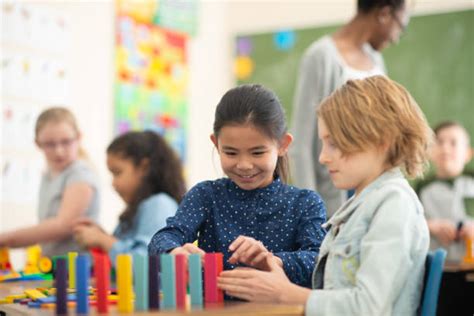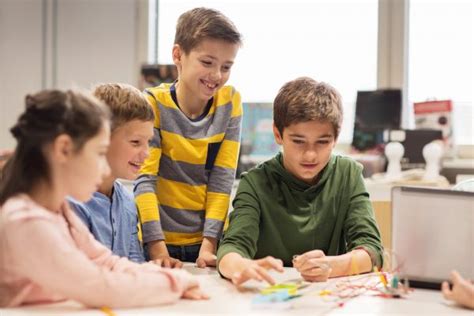Engaging students in the classroom can be challenging, but incorporating teaching games can transform learning into an enjoyable and effective experience. This article explores ten fun and impactful teaching games designed to boost student engagement and participation. From Jeopardy-style reviews to storytelling with props, these activities not only make learning more interactive but also enhance comprehension and retention. Whether you’re an educator looking to enliven your lessons or a parent aiming to support your child’s education, these games provide practical and innovative methods to create a dynamic classroom environment. Dive into these engaging teaching strategies and discover how they can motivate students and foster a love for learning.
Dive deep into this topic alongside gameshoek.com
1. Introduction to Teaching Games
Teaching games are a powerful tool to create an engaging and interactive classroom environment. These activities go beyond traditional methods, making learning fun and effective. By incorporating games into lessons, educators can capture students’ attention, enhance their understanding, and boost retention of the material. Teaching games also encourage active participation, teamwork, and critical thinking skills, which are essential for student development.
Games provide a dynamic way to present information, allowing students to learn through experience and play. This approach can be particularly beneficial for diverse learning styles, as it combines visual, auditory, and kinesthetic elements. Moreover, teaching games can break the monotony of lectures and worksheets, creating a lively atmosphere that keeps students motivated and eager to participate.
The versatility of teaching games means they can be adapted for various subjects and age groups, ensuring that all students can benefit from this approach. From reviewing key concepts to introducing new topics, games can be tailored to meet specific educational goals. In the following sections, we will explore ten effective teaching games that can transform your classroom into a vibrant learning space. These activities are designed to engage students, foster collaboration, and make education an enjoyable journey.

2. Game 1: Jeopardy-Style Review
Jeopardy-style review games are an exciting way to reinforce knowledge and prepare students for exams. Inspired by the popular TV game show, this activity transforms the review process into a competitive and interactive experience. To set up, divide the class into teams and create a game board with categories and point values. Categories can be based on the subjects or topics you are covering, such as history, math, science, or literature.
Each team takes turns selecting a category and point value, then answers the corresponding question. If they answer correctly, they earn points; if not, other teams have the opportunity to steal. This format not only makes reviewing material more engaging but also encourages teamwork, critical thinking, and quick recall of information.
Jeopardy-style games can be customized to fit different grade levels and subjects. For younger students, questions can be simpler and include visual aids, while older students can tackle more complex questions. This game also allows for creativity in question design, making it possible to include multimedia elements like images, videos, and audio clips to enhance the learning experience.
Overall, Jeopardy-style review games create a fun, competitive environment that motivates students to actively participate and engage with the material, making review sessions both enjoyable and productive.

3. Game 2: Educational Scavenger Hunt
An educational scavenger hunt is an excellent way to combine physical activity with learning, encouraging students to explore and discover new information in a fun and interactive manner. To organize this game, prepare a list of items or clues related to the lesson topic. These can range from specific objects around the classroom or school to questions that need to be answered or tasks to be completed.
Divide students into small groups and give each group a list of clues. As they work together to find the items or solve the clues, they engage in critical thinking, collaboration, and problem-solving. This hands-on approach makes learning memorable and enjoyable, as students actively participate and move around.
For example, in a history lesson, clues might lead students to different artifacts or locations relevant to the period being studied. In a science class, they might find items or complete experiments related to the current topic. Educational scavenger hunts can be tailored to any subject and grade level, making them a versatile tool for enhancing student engagement and fostering a love for learning.

4. Game 3: Role-Playing Scenarios
Role-playing scenarios are an effective way to immerse students in real-world situations and develop their understanding of various subjects. In this game, students assume different roles and act out scenarios relevant to the lesson, which encourages active participation and deepens their comprehension.
To implement this game, choose a topic and create a scenario with specific roles for students to play. For instance, in a history lesson, students might reenact a historical event, with each student portraying a key figure. In a language arts class, they could role-play characters from a novel to explore motivations and themes.
Role-playing helps students develop empathy, communication skills, and critical thinking as they put themselves in others’ shoes and respond to different situations. It also promotes teamwork and collaboration, as students must work together to bring the scenario to life.
This interactive approach not only makes learning more engaging but also helps students retain information by experiencing it firsthand. Role-playing scenarios can be adapted for various subjects and grade levels, making them a versatile and impactful teaching tool.

5. Game 4: Interactive Quiz Competitions
Interactive quiz competitions are a dynamic way to review material and energize the classroom. This game involves dividing the class into teams and asking a series of questions related to the lesson. Each team collaborates to answer the questions, earning points for correct responses.
To set up, prepare a list of questions covering key topics. You can use various formats, such as multiple choice, true or false, and short answer. Incorporate technology by using quiz platforms or apps to make the competition more engaging and interactive.
Interactive quiz competitions encourage active participation, teamwork, and quick thinking. They also provide immediate feedback, helping students identify areas they need to review further. The competitive element motivates students to pay attention and strive for accuracy.
This game can be adapted for any subject and grade level, making it a versatile tool for reinforcing knowledge and assessing student understanding. By turning review sessions into lively competitions, you can create a fun and stimulating learning environment that keeps students engaged and motivated.

6. Game 5: Puzzle Challenges
Puzzle challenges are an excellent way to develop students’ problem-solving skills while making learning fun and engaging. These games can take many forms, such as crosswords, jigsaw puzzles, Sudoku, or logic puzzles, all tailored to the lesson content.
To implement puzzle challenges, create puzzles related to the subject matter. For example, a crossword puzzle can include vocabulary terms from a recent reading assignment, or a jigsaw puzzle might reveal a significant historical event or scientific concept once completed. You can also use digital puzzle-making tools to design interactive puzzles that students can solve on computers or tablets.
Puzzle challenges encourage critical thinking, attention to detail, and perseverance. They require students to apply their knowledge creatively and work through challenges step-by-step. Group puzzles promote teamwork and communication as students collaborate to find solutions.
These activities are versatile and can be used across various subjects and grade levels. They provide a break from traditional teaching methods while still reinforcing key concepts and skills. By incorporating puzzle challenges into your classroom, you can create an engaging and stimulating environment that motivates students to think critically and enjoy the learning process.

7. Game 6: Classroom Debate Games
Classroom debate games are a powerful way to enhance students’ critical thinking, communication skills, and ability to engage in respectful discourse. This activity involves students taking sides on a particular issue or topic and presenting arguments to support their position.
To organize a debate game, select a topic relevant to the lesson or current events that offers multiple viewpoints. Divide the class into teams, assigning each team a position to argue. Provide time for students to research and prepare their arguments, encouraging them to use evidence and reasoning to support their points. During the debate, each team presents their arguments, followed by a rebuttal period where they respond to opposing viewpoints.
Classroom debate games foster skills such as public speaking, argumentation, and active listening. They also promote critical thinking as students must evaluate different perspectives and construct logical arguments. Additionally, these debates help students learn to engage respectfully with differing opinions and develop a deeper understanding of the topic at hand.
Debate games can be tailored to various subjects and grade levels, making them a versatile tool for creating an interactive and thought-provoking learning environment. By incorporating debates into your classroom, you can create an engaging experience that encourages students to think critically and communicate effectively.

8. Game 7: Storytelling with Props
Storytelling with props is a creative and interactive way to engage students and enhance their narrative skills. This game involves using various objects or visual aids to inspire and enrich storytelling, making the activity both imaginative and educational.
To set up, gather a collection of props related to the lesson or theme, such as historical artifacts, everyday items, or themed objects. Divide the class into small groups and assign each group a set of props. The task is to create and present a story incorporating all the assigned items. Encourage students to use the props creatively, weaving them into their narratives in meaningful ways.
This activity stimulates creativity, improves verbal communication, and enhances students’ ability to construct coherent and engaging stories. It also encourages collaboration as students work together to develop their stories. Storytelling with props can be adapted for various subjects, from literature and history to science and art, providing a versatile tool for making learning more dynamic and enjoyable.

Incorporating teaching games into the classroom can transform learning into an engaging and interactive experience. From Jeopardy-style reviews to storytelling with props, these activities foster active participation, critical thinking, and collaboration. They make learning enjoyable while reinforcing key concepts and skills. By integrating these fun and effective games, educators and parents can create a stimulating environment that motivates students and enhances their educational journey. Embracing these strategies not only enriches the learning process but also helps build a lifelong love for learning.
gameshoek.com
